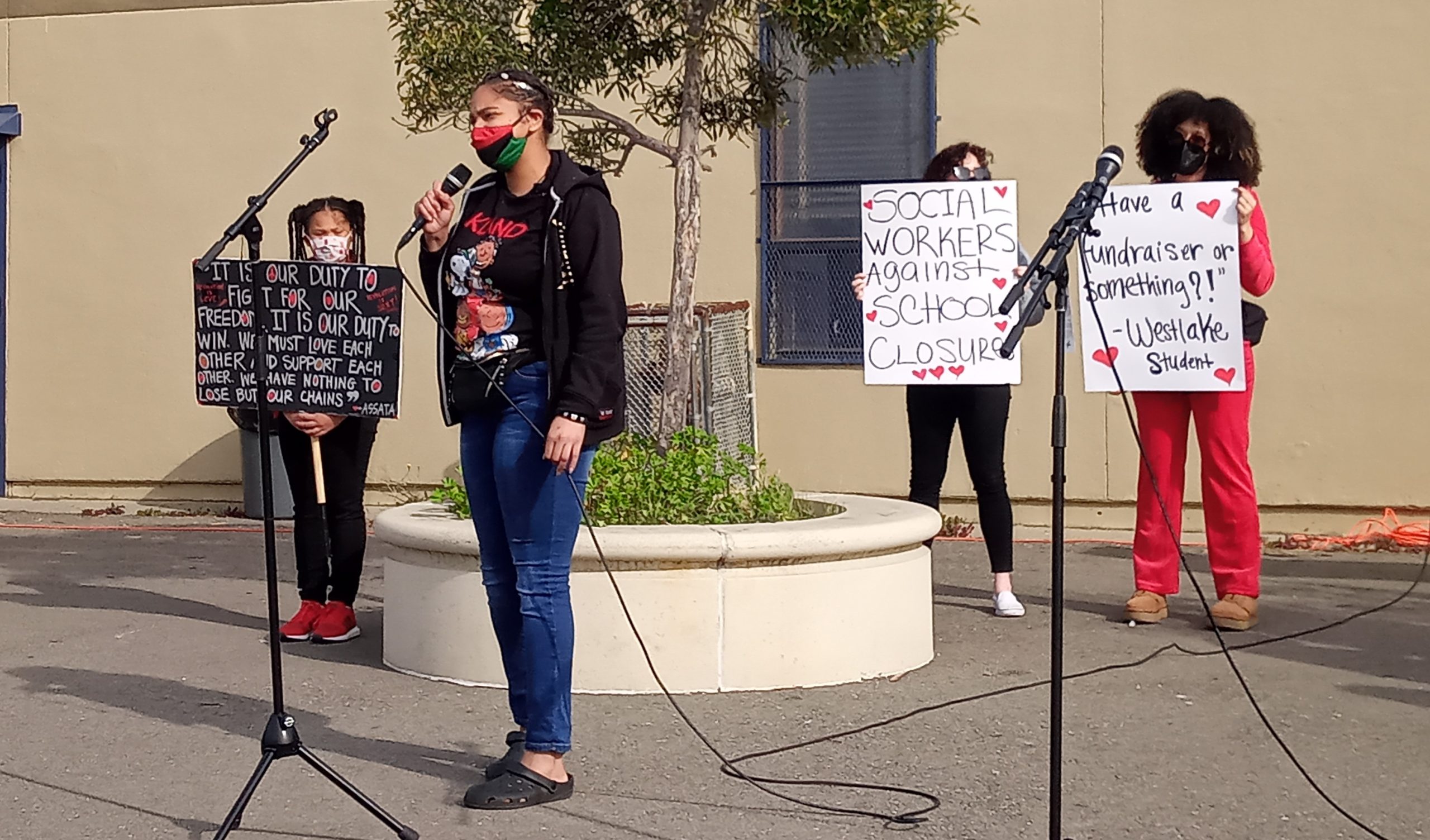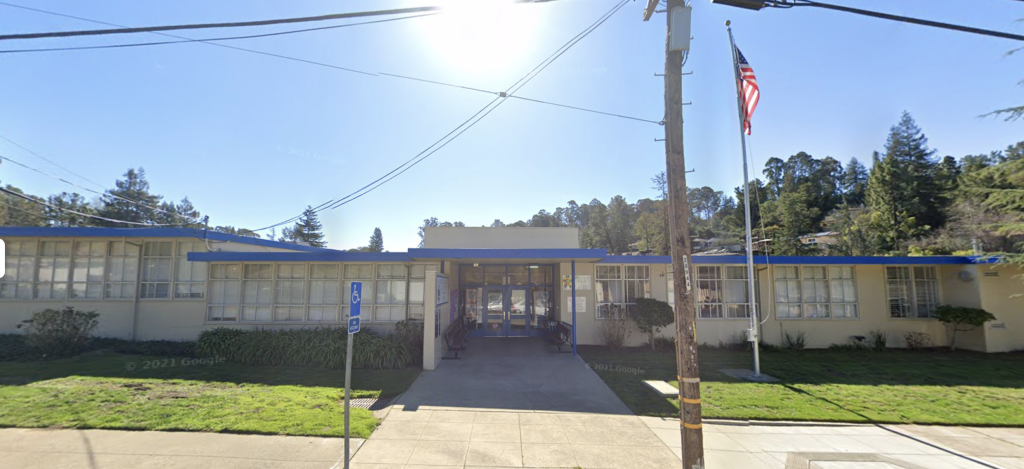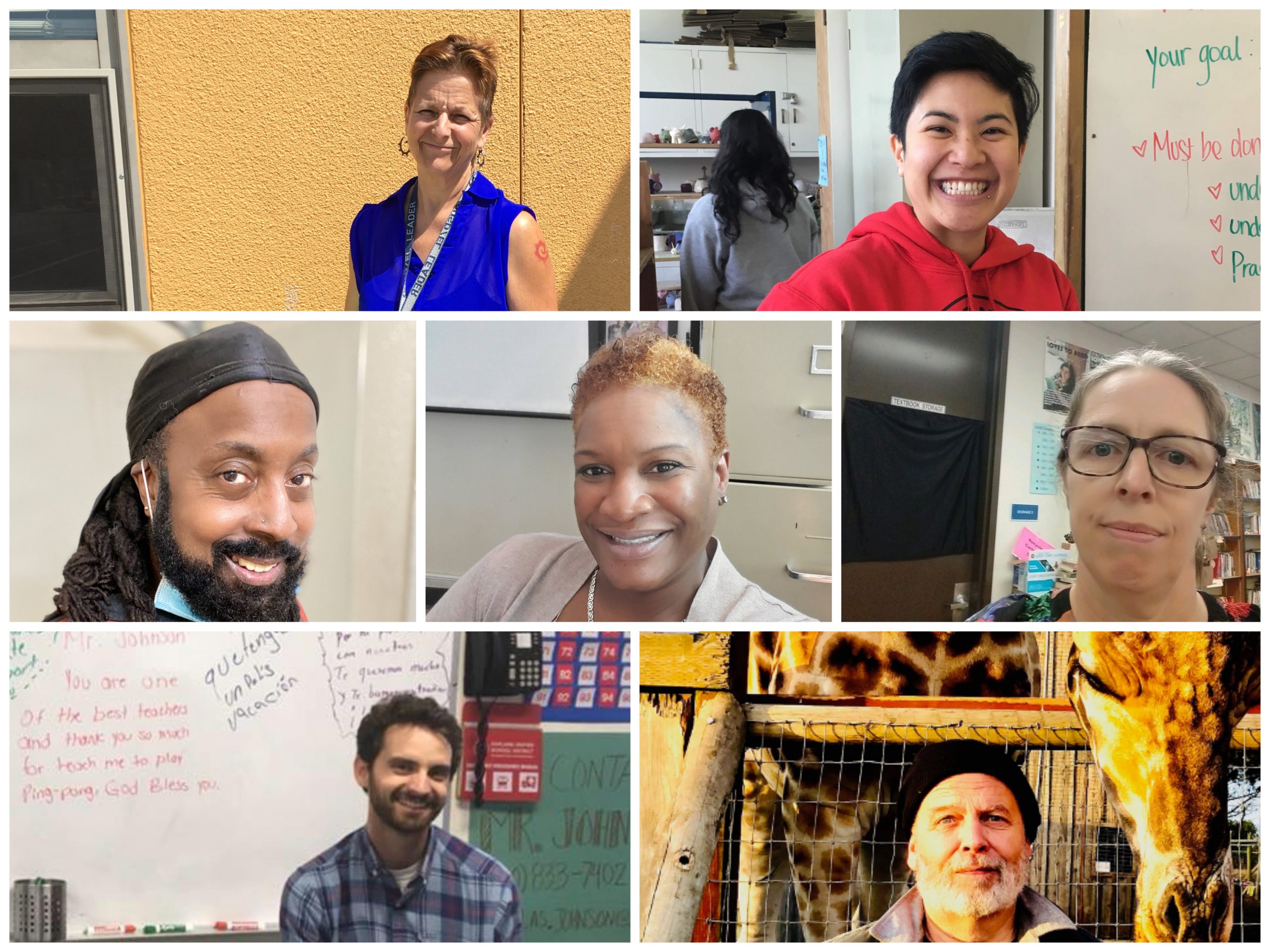
Minutes shy of 1 a.m. on February 9, at the end of an 8 hour meeting that included over one and a half hours of children pleading to save public schools, the OUSD School Board voted to close 8 of those schools and truncate two others. As district leaders have cited declining enrollment to justify school closures that will primarily impact the most vulnerable families in the community, Oakland Voices talked to one mom whose family’s journey through OUSD has come to an abrupt end.
Ariel Loudd, mom of two children at Grass Valley and organizer with Reparations for Black Students, says she is taking her kids out of OUSD schools at the end of this school year.
Ariel Loudd, a parent organizer with the Reparations for Black Students campaign, is a parent of two students at Grass Valley Elementary, one of the schools slated for closure at the end of next year. Her daughter Ah’Miya is a fourth grader, and her son Evan is in kindergarten.
“Another year isn’t good enough,” she says about the board’s decision to delay the permanent closure of her childrens’ school. “That leaves families stressed and confused on what schools to send their children and disrupts many families, jobs, and community school support,” she said.
“It also imposes additional stress on students trying to figure out what schools their peers are going to attend so they don’t break up their friendships,” Loudd said.
In addition to being a majority-Black school, Grass Valley has the most students with disabilities in the district, and the second most Black students with disabilities of any OUSD elementary school. Though Lloud’s own children are not special needs, she said that “The thought of new teachers, schools, and community will create an everlasting psychological impact on all children, especially special needs children.”
Grass Valley is located in the Oakland hills near the Lake Chabot golf course. The school is 65% Black, with a 23% Latinx population as well. The student population is 34% special education (well over twice the district’s average of 14.2%), 76.2% low income (above the district average of 72%), and 14% English Language Learners (equal to the district average).
Loudd said that after the chaos of multiple disruptions in the past few years, she will pull her children out of OUSD and homeschool them going forward.
Ah’Miya had previously been at Howard Elementary in East Oakland, but Francophone Charter School of Oakland was co-located onto their campus in 2019-2020.
When the co-location happened, one of Ah’Miya’s classes was moved into a former storage closet in order to accommodate the charter school. “You obviously didn’t have space to put another school there,” Loudd said.
Before the co-location, Loudd felt that Howard had been a good learning environment for her daughter. “It was nice,” she said. “Parents could communicate with teachers.” She added that the school also offered food and other resources not just to Howard families, but to the local community as well.
Howard is 60% Black, 88% low income, 37% special education, and 13% ELL. In stark contrast to the Howard student population, Francophone is 38% white, only 27% low income, and only 18% ELL. There is no information available on whether or not it serves any special education students.
According to Loudd, the co-location was announced to Howard families on short notice, at the end of the 2018-2019 year.
The following school year, with a charter school taking over part of their school site, Loudd says that her daughter and her classmates felt “uncomfortable.” Some even felt “angry.” Howard kids suddenly weren’t allowed to be in certain places on campus at certain times, and vice versa. “No one felt welcome on either side,” said Loudd.
Not surprisingly, many children’s behavior changed. She recalls that many started misbehaving. Loud says that the experience made several kids not even want to go to school anymore at all. “It was a very emotional and difficult experience. You witnessed someone else occupying a space you were comfortable in.”
Tension and distrust are common when one school is co-located on another school’s campus. In 2013, Frying Pan News reported, “It’s not easy to house two separate schools on the same campus and it can be particularly difficult when the schools have separate and disparate cultures, educational philosophies and traditions.”
While there is almost always some amount of tension during pick up and drop off at most schools, Loudd said that at Howard under co-location, such tensions were exacerbated. She said that families from the charter school drove noticeably “higher class” cars compared to the “more affordable” cars driven by the Howard families who were fortunate enough to even own cars.
“You really saw the disparities and the divide between people,” Loudd noted.
In the fall of that first and only year occupying space on the Howard campus, Francophone requested alternate facilities because the co-location was not working out for them. After Francophone left, Roses in Concrete, a former charter school that became a special OUSD program, took over their vacated space for the 2020-2021 year. Now, Oakland Academy of Knowledge, a brand new OUSD school, occupies that space this year.
After Ah’Miya’s tumultuous year under a co-location, Loudd pulled her daughter out of Howard and enrolled her at Grass Valley Elementary School, 4.5 miles further up into the hills from Howard.
She says that the drive has been worth it though because she wants her children to go to “a better school” than the ones closer to her flatland home.
One of the reasons cited by district leadership for wanting to close schools is that schools that serve less than 300 students aren’t cost-effective. Grass Valley has 243 students this school year.
However, special education classes are about half the size of general education classes. Any school with as high a concentration of students with disabilities as Grass Valley could be considered “under-enrolled.”
When it came time for her son Evan to start kindergarten at the beginning of this school year, Loudd tried to enroll him at Grass Valley with his older sister.
Despite the fact that the district’s enrollment policy is supposed to prioritize siblings of currently enrolled students, the district assigned Evan to the family’s neighborhood school, Markham Elementary, instead of Grass Valley.
Seemingly in contrast to today’s narrative from district leadership that Grass Valley is under enrolled and therefore should be closed, Evan was waitlisted for two weeks before he could get in this school year.

While Loudd’s OUSD experience has been chaotic, she admits that at least she has the means and wherewithal to navigate the experience, unlike many other Oakland flatland families. “My kids will be homeschooled, but I know a lot of other parents can’t,” she said.
Loudd, who operates a youth program called Young Black Leaders of the Future, notes that children get their social and emotional needs met through in-person schooling. When schools are disrupted through closures, consolidations, or co-locations though, she says that families’ lives and communities are disrupted.
Loudd adds that school disruptions in low-income communities inevitably contribute to the school-to-prison pipeline. Research has shown that school closures have led to lower test scores, graduation rates, and college enrollment rates. There is also data that shows that schools that receive students from closed schools are negatively impacted as well.
Research has also shown that closing schools leads to increased political activism in affected communities.
Meanwhile, protests against the school closures continue in Oakland. The Port of Oakland was shut down today, and activists rallied in Frank Ogawa Plaza and in front of the state building. Westlake hunger strikers Moses Olanrewaju Omolade and Maurice André San-Chez are 17 days into their hunger strike to demand an end to all school closures in Oakland.
Asked why she got involved with the Reparations for Black Students campaign, Loudd told Oakland Voices, “They are an organization that stood up to fight and protect our students and community from school closures and education oppression, provide community support services, and work with integrity.”
Tony Daquipa is a dad, essential bureaucrat, photographer, urban cyclist, union thug, wannabe stonemason, karaoke diva, grumpy old man, storyteller, and preserver of history.




1 Trackback / Pingback